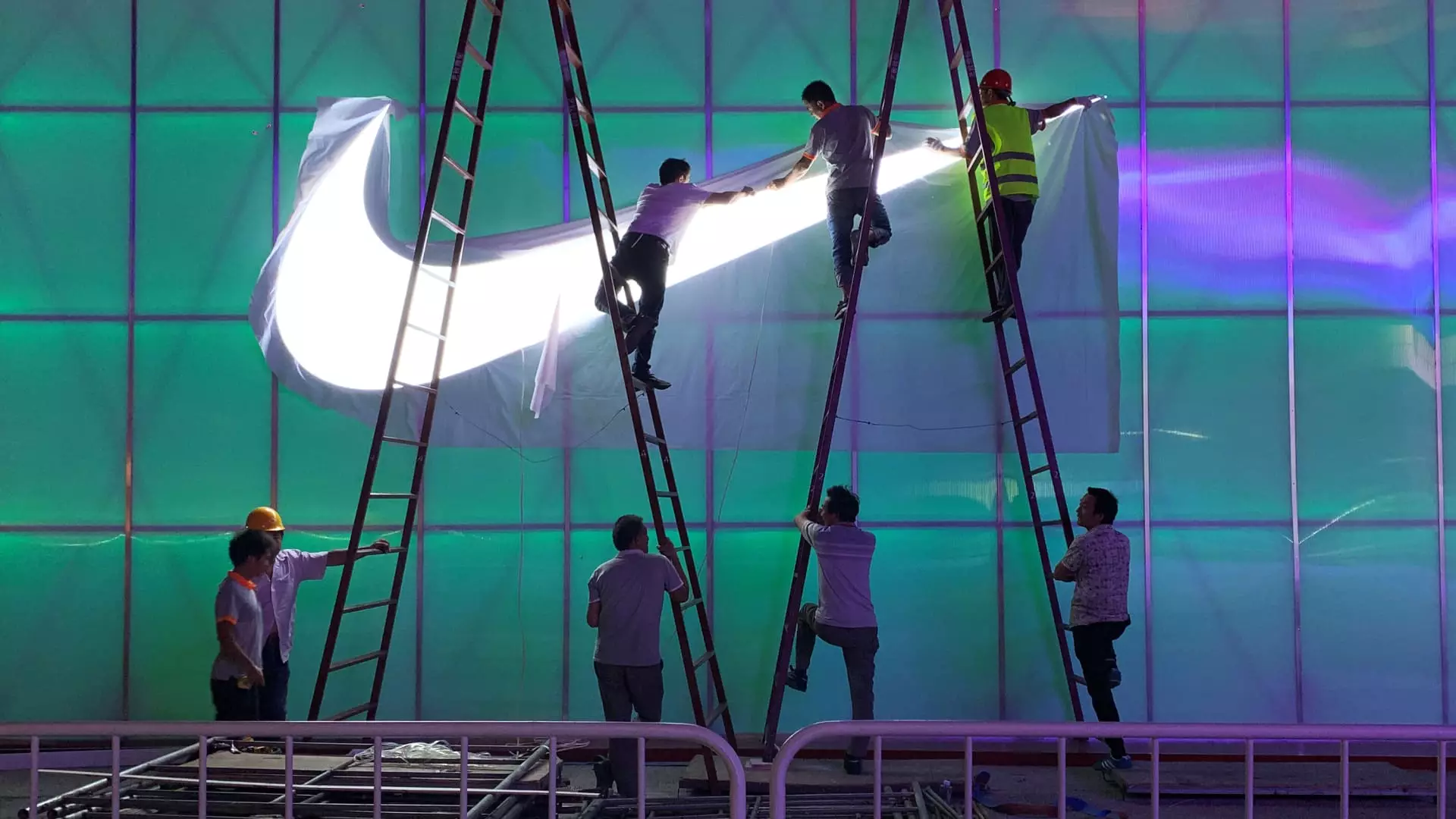The global economic landscape is often shaped by the actions and policies of major players, particularly China, which wields substantial influence over consumer markets worldwide. In a context marked by leadership changes at prominent U.S. companies like Starbucks and Nike, the potential success of China’s new economic stimulus plans could herald a pivotal moment not only for these corporations but also for the industries they represent. As these leaders step into their roles, they find themselves navigating a complex interplay of market dynamics and consumer perceptions, with China at the heart of their strategies.
China’s recent economic stimulus initiatives aim to reinvigorate consumer spending, which is crucial for its economic growth. This revitalization could provide significant opportunities for U.S. brands with substantial market exposure in the region. Starbucks and Nike, with 8.6% and 14.7% exposure to the Chinese market, respectively, stand to gain considerably if these stimulus plans translate into boosted sales. The optimism surrounding these prospects is not merely speculative; analysts suggest that a coordinated fiscal response could lead to meaningful consumer engagement, particularly if policies are effectively executed and sustained over time.
As these two companies look to align their strategies with the anticipated Chinese economic rebound, they must remain vigilant and adaptive. For instance, Starbucks’ leadership transition has been accompanied by a reshuffling of its team in China, indicating a strategic pivot likely aimed at maximizing the company’s footprint in this crucial market. The current CEO, Brian Niccol, appears to have an urgent need to galvanize resources and rejuvenate the brand’s appeal amidst rising competition from local businesses.
Despite the potential benefits tied to a recovering Chinese economy, certain obstacles could impede Nike and Starbucks’ ability to fully capitalize on these opportunities. Foreign brands are encountering an increasingly skeptical consumer base in China, driven by a growing preference for domestic products and a rising competitive landscape. Analysts caution that the potential for global brands to experience significant gains from China’s recovery is anything but guaranteed. As Bank of America’s Chen Luo articulated, consumers are now more focused on the functional and emotional values of products, which poses a challenge for these iconic brands as they attempt to resonate with a discerning audience.
Moreover, while market sentiment may improve with the announcement of leadership changes, these changes alone are insufficient to foot the long-term growth trajectory that investors are seeking. Recent conversations among investors reveal a cautious optimism regarding the leadership changes at Nike and Starbucks. Many are adopting a wait-and-see approach, keen to assess how well these companies can adapt to shifting market dynamics. Ellen Hazen, a chief market strategist at F.L. Putnam, expressed skepticism regarding the short-term impact of Chinese stimulus measures on Starbucks’ consumer base, highlighting the need for clear, substantial outcomes from economic interventions before any lasting confidence can be established.
As both Brian Niccol and Elliott Hill begin their tenures, the paramount challenge lies in effective execution of their strategies. In the case of Nike, the company’s CFO Matthew Friend has pointed out the inherent long-term opportunities present in China’s rising sports culture, underscoring a belief in a growth-oriented trajectory. However, for this optimism to translate into tangible outcomes, innovative approaches must take precedence over mere managerial changes. Hill’s leadership will be scrutinized closely as he attempts to reengage the market and explore avenues to enhance Nike’s standing amid an evolving competitive environment.
All eyes remain on these two U.S. giants as they attempt to leverage economic developments in China while contending with internal challenges. Observers note that while leadership changes can act as morale boosters, they do not automatically catalyze growth. Indeed, sustained success will hinge on whether Niccol and Hill can invigorate their respective brands’ offerings and authentic positioning within a complex and oft-turbulent market landscape.
Looking ahead, both Starbucks and Nike face a dual challenge: to revitalize their brands in the face of growing competition and adapt to the nuances of Chinese consumer behavior. With the backdrop of an uncertain economic recovery, stakeholder patience will likely become a defining feature in the coming months. Investors naturally seek clarity amid the backdrop of China’s dynamic consumer market, as the efficacy of stimulus measures and brands’ tactical responses will be thoroughly evaluated.
While there are notable opportunities for growth in the wake of China’s economic stimulus, the execution of strategy, consumer engagement, and market positioning will be vital for Starbucks and Nike as they aspire to reposition themselves amid heightened expectations from stakeholders around the world. As these leaders embark on their journeys, the lesson resonates: success in the global marketplace often hinges not just on policy shifts but on a deep understanding of consumer sentiment and adaptive execution.

Leave a Reply